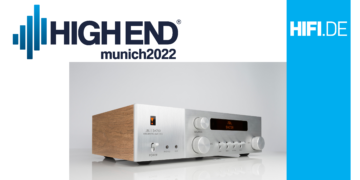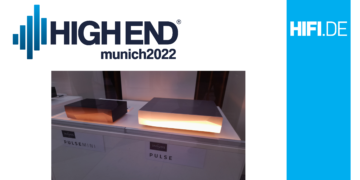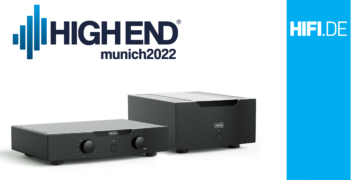| HIFI-FORUM » Stereo » Elektronik » Verstärker/Receiver » per cd-direkt-in oder effektschleife direkt zur en... | |
|
|
||||
per cd-direkt-in oder effektschleife direkt zur endstufe+A -A |
||||||
| Autor |
| |||||
|
mookee
Stammgast |
#1
erstellt: 26. Jan 2012, 19:35

|
|||||
|
hallo ich hab bei meinem hybrid verstärker  luxman lv103u luxman lv103ueinen cd direkt eingang und eine effektschleife IN/OUT. soweit so gut da ich meine dj plattenspieler über ein mischpult laufen habe , und für den mixeerr eigentlich keine vorstufe brauch, dachte ich, diesen über "cd direkt" direkt-_- an die endstufe koppeln zu können. geht das, bzw., da ich einen effektschleife am amp habe , und in dessen eingang den mixer hänge, bin ich dann an der endstufe? soll heisen, wie umgeh ich meine vorstufe bzw. komm direkt an die endstufe?(auch wenns ne nette ist..:) danke mal lg c [Beitrag von mookee am 26. Jan 2012, 22:45 bearbeitet] |
||||||
|
mookee
Stammgast |
#2
erstellt: 26. Jan 2012, 23:02

|
|||||
|
check this out ... FEATURES A unique amplifer design fitted with all the features that were typical of the times. Rated at 80WPC into 8 ohms, with low impedance compatibility. A full featured amp with 7+2 inputs: phono, tuner, CD, tape 1 and 2, AV 1 and 2. AV2 has two sets of inputs, rear and front, selectable by front panel switch. In addition, the 'processor in' jacks can be used as an extra 'direct' input. AV inputs also have a video component (AV 1 being a record capable device), with an extra video out for a monitor. A processor out and in connection on the back separates the pre and power sections and can be used in several ways. This amplifier has one more prominent feature: an extremely low noise phono section, 90dB minimum for MM and 77dB minimum for MC. The usual tone controls are included, which are normally defeated, and switch on by a switch on the front panel. They have a relatively small +-5dB adjustment range, which is never the less much more usefull than the traditional and often too severe +-10dB or more. A loudness control, mono mode selector, separate record out selector, processor in/out and CD direct switches are also included. Two speaker pairs can be used (4-16 ohms single pair, 8-16 both pairs). The most striking feature are of course the tubes, visible through a window on the front panel. The amp has a preheat mode that essentially keeps the whole circuit in standby to avoid a long startup time. Build quality is the typical high of the times, these amps were actually made in the same production facilities used by other well known names, such as Harman Kardon, NAD, Proton, and others. (A LOT OF) DETAILED INFO The reviews of this amp have an astounding range - from the wildly exuberant to the 'avoid at all costs'. [...] It is truly surprising that an amp that was in production for 9 years and out of it for as many, has so many falsehoods and misconceptions about it floating in the audio circles. Past experience has shown that most such controversial units' expressed faults tend to be an expression of people thinking it's so darn near perfect, so why not make it completely perfect - the problem being, everyone's idea of perfection is different. If there is one fault to the concept, it's that Luxman never expanded this design into a fully differential hybrid amp, that would make even Nelson Pass proud - of course, it would have cost 2-3x the original MSRP then... Here are the common foibles: 1) "The LV 105 consists of a MOSFET power amp and a tube preamp" - not true. The whole series (LV-103, 105, 103u, 105u, and the rare 107u) are based on a high gain hybrid power amp with a passive front end. For some reason the idea floating around is that a passive front end was invented recently by people building tube amps based on 40+ year old Dynacos and Marantzes in their garages... In the case of the Luxman, the only active part of the 'preamp' is the solid state phono section and record out buffer. 2) "Only half of the dual triode is used" - only if you don't recognise a differential amplifier. This one keeps popping up since the original LV-103 - get the service manual and have a look! The amplifier is a FET - BJT - Triode - MOSFET hybrid, essentially incorporating every electronic amplification technique known to man. It has a total of 3 and a half stages, all differential except the MOSFET output. It's a JFET - BJT differential cascode with current mirror termination, followed by a dual triode differential stage with active load (BJT current source), and finally followed by a complementary power MOSFET output stage. The tube, a 6FQ7 (or 6CG7), is a dual medium mu driver triode capable of a couple Watts as a push-pull amp. The output are originally Toshiba second generation power MOSFETs, which were upgraded to third generation in the 107u and also in this particular unit - more below. 3) "The preamp is mediocre because it can't drive low impedance loads" - nonsense, it can hardly be true because there is no preamp, see (1). The tone controls are active and they use a common audio IC (NE5532 clone). The tone button by default routes the signal completely past them, including the IC. The passive section is very well done and introduces negligible noise - most competing amps using this concept lost about 12-16dB in the signal to noise ratio. Since there is no buffer, the amp will not drive a low imput impedance power amps through it's processor out jacks without loss of volume, except when the input is set to phono, as the phono section has a low impedance output. It will however impecably drive its own power amp of course! 4) "The processor in/out are not true pre-out/main-in connections" - true to a point - they separate the 'passive preamp' and power amp section in front of the volume control, rather than after it, as would be the common case. However, this setup has some advantages - it makes the 'procesor in' jacks another 'direct' input, bypassing a lot of cable length. All it takes to make this a true 'main-in' is to turn the volume all the way up. The 'processor out' jacks also make it possible to use the excellent phono section alone, as a phono preamp, by permanently selecting the 'phono' on the input selector. An interesting combination to use is the LV 105u in conjunction with a line level preamp. Given a good line amp, this system will be unsurpassed for the money. I know a person who has a setup like this in order to use the LV-105u's superb phono section, without loss of the power amp - he transfers LPs to CDs for a living. 5) "It is possible to modify this amp to get more power output" - Ideas about modifications have been floating around ever since the series made it's debut, some sound, some not. One was to replace the output MOSFETs with BJTs, and while possible, it is not at all simple requiring quite extensive modification, the result would only be different rather than better (whatever that is, this amp is already very good). A complete misconception is that any modification along these lines will get one more output power - this has no foundation in the truth. There is plenty of power, courtesy of a huge transformer and 16400uF of capacitors per channel, just for the power output - driver and phono have separate power supplies. The driver has a good +-20V extra output swing over the output - it will easily overcome the several V of Vgs for the MOSFETs! The idea of insufficient power probably comes from the LV-105u having an unusually but acurately graded volume selector - -10dB (psychoacustical half of maximum volume) is not at the half position, but rather about 2/3 of the range of the volume control, which may make one think it's not nearly as powerful as it's advertized. 6) "The preheat switch keeps the tube heaters on" - not true. It actually keeps the whole amplifier circuit on, just the speaker relay is off and the input is muted. The amp takes about 1 minute to warm up to functioning level (the internal circuitry waits until the output DC offset drops to under 50mV) but it really stabilizes completely after about 20 minutes or so, more if the ambient is cold. It will sound a bit odd for the first half to one hour. Therefore the 'preheat' function. The drawback of using it is that you use up tube life and generate a lot of heat, the advantage, the filaments are subjected to less shock from power on and off cycles. |
||||||
|
|
||||||
|
mookee
Stammgast |
#3
erstellt: 26. Jan 2012, 23:12

|
|||||
|
ok. das heist ich kann den effekteingang nutzen und bin dann bei der endstufe mehr oder weniger. gilt das für alle amp die über sowas verfügen, also allgemein gültig, oder ist das trotzdem von amp zu amp unterschiedlich... was punkt 4 anbelangt..: heist das ich hab nur im phono ne geile vorstufe, und wenn ich ne nanderen input als phono wähle, hab ich einen lautstärkeverlusst sofern ich den (welchen?) output verwende..etc.? was geht bei den anderen inputs..sind die schlecht, kann ich die phonovorstufe für aux verwenden, und, und..and a rocket launcher, that would be awesome..    [Beitrag von mookee am 26. Jan 2012, 23:14 bearbeitet] |
||||||
|
mackimessa
Stammgast |
#4
erstellt: 27. Jan 2012, 15:58

|
|||||
|
Nur die Phono Eingänge haben Entzerrer Vorverstärker an Bord. Also die nur für Plattenspieler nutzen. Normal kannst du aber auch die umschalten auf Hochpegel. |
||||||
|
kadioram
Inventar |
#5
erstellt: 27. Jan 2012, 17:43

|
|||||
|
Mal ganz ehrlich: Zwar hab ich nicht wirklich Ahnung, wie wertig der Luxman einzuordnen ist, aber bei einem Verstärker, der sich wohl in erster Linie durch seinen Röhrenpreamp auszeichnet, diesen zu überbrücken, um nur die Endstufe zu nutzen, ist irgendwie...  ... wie Perlen vor die Säue, zumindest erschließt sich mir den Sinn nicht so ganz... ... wie Perlen vor die Säue, zumindest erschließt sich mir den Sinn nicht so ganz...  Es gibt imo mehr Gründe dafür, das Mischpult ganz normal an den Aux-Eingang zu hängen, als direkt in den Amp zu gehen. |
||||||
|
mookee
Stammgast |
#6
erstellt: 27. Jan 2012, 22:21

|
|||||
|
ja danke für eure antworten. ich denk mir nur das mischpult ist sowieso eine art vorverstärker und ich seh nicht was es bringt da nochmal in einen vorverstärker zu laufen. dazu kommt eben das scheinbar nur der phonoeingang wirklich was kann..also hmm?!? wieso sollt ich ? oder hab ich das falsch interpretiert was da steht. kenn mich auch nicht wirklich aus was die vorstufe so macht, und was sie mir in meiner verbindung (mixer-endstufe oder amp)hilft. sag mal bitte  zum phonoeingang. heist das ich kann die phono-röhren-vorstufe per umbau nutzen als aux, oder was meinst du mit "Normal kannst du aber auch die umschalten auf Hochpegel" da steht ja, dass ich verluste hab, wenn ich bei anderem input als phono den output nutze. bei phono nicht weil der nicht hochpegel ist. oder? "In the case of the Luxman, the only active part of the 'preamp' is the solid state phono section and record out buffer." siehe pkt. 3 und wenn ich jetzt den aux eingang per output weiterschleifen möchte zu einem 2.amp, hab ich verlusste. möcht ich aber machen. kann ich das umgehen? und vielleicht hat jemand ne ahnung was mit pkt.5 "There is plenty of power, courtesy of a huge transformer and 16400uF of capacitors per channel, just for the power output - driver and phono have separate power supplies. The driver has a good +-20V extra output swing over the output - it will easily overcome the several V of Vgs for the MOSFETs! " gemeint ist? ich will mehr power ich dank euch für eure hilfe. lg c |
||||||
|
andre11
Inventar |
#7
erstellt: 28. Jan 2012, 09:56

|
|||||
Nix, außer das Du verschiedene Eingänge überblenden kannst! Anschluss dann: Hochpegelausgang Mischpult an einen beliebigen Eingang des Luxman, und hier die Maximallautstärke einregeln. Absenken dann am Mixer. Die Processor Schleife ist, wie der Name schon sagt, zum Einschleifen von Effektgeräten gedacht. Sie ist keine Auftrennung von Vor- und Endstufe.
Was verstehst Du unter "können"? Die Vorstufe im Luxman macht außer Lautstärke- und Klangregelung im Prinzip wirkliche nichts, aber das machen die meisten Vorstufen in Verstärkern auch nicht. Warum auch? Das Signal der meisten Hochpegelquellen ist ja auch stark genug, nur eben das Phonosignal nicht.
Totaler Unsinn!
Natürlich kann man elektrisch am Geräte was verändern um mehr LEistung zu erhalten. Die Geräte 103, 104, 105 und 107 unterschieden sich ja im Wesentlichen nur durch die Ausgangsleistung.
Kauf Dir einen anderen Verstärker, und lass das Schmuckstück so wie es ist, nämlich als sehr feinen Verstärker mit tollem Klang. Gruß André |
||||||
|
mookee
Stammgast |
#8
erstellt: 28. Jan 2012, 15:21

|
|||||
|
hmm, ich weis ja nicht. wenn ich den luxman output nutze hab ich aber trotzdem irgendwo verlusste, oder nicht? |
||||||
|
andre11
Inventar |
#9
erstellt: 28. Jan 2012, 16:49

|
|||||
|
Was für Verluste? Die hast Du doch schon eine Stufe früher - bei dem Mischpult. |
||||||
|
akem
Inventar |
#10
erstellt: 30. Jan 2012, 18:04

|
|||||
Ich verstehe Dein Problem nicht ganz: Du verschmähst eine gute Phonostufe im Luxman, um Dein Phonosignal durch das Mischpult verrauschen zu lassen, schickst es dort durch wer weiß wie viele billigste Bauteile - und dann machst Du ein Riesendrama draus, ob das eh schon verhunzte Signal nicht im Luxman einen Widerstand zu viel durchlaufen könnte  Also, ich muß ja nicht alles auf dieser Welt verstehen, aber man kann sich das Leben schon unnötig kompliziert machen... Also, ich muß ja nicht alles auf dieser Welt verstehen, aber man kann sich das Leben schon unnötig kompliziert machen...Gruß Andreas |
||||||
|
mookee
Stammgast |
#11
erstellt: 03. Feb 2012, 22:17

|
|||||
|
nein, e sgeht niocht um die kllangverlusste bei der mischpultinstallation.! mir gehts daruzm, das wenn ich am output ne zweite endstufe häng, steht in den features glaub ich , das ich verlüsste im pegel hab, sofern ich nicht den phonoeingang am luxman aNSTEUERE; WEIL DIESER PHONOEINGANG ANDERS VORVERSTÄRKT ENTSPRICHT PHONO IN PLUS OUTPUT AN ENDSTUFE KERINE VERSLUSSTE ABER AUX IN PLUS OUTPUT AN ENDSTUFE VERLUSSTE is dem so?, so versteh ichs nämlich |
||||||
|
akem
Inventar |
#12
erstellt: 04. Feb 2012, 17:57

|
|||||
|
Wenn Du das zwischen Tür und Angel blind in die Tasten Geklopfte ins Deutsche übersetzt, könnten WIR es vielleicht auch verstehen  Gruß Andreas |
||||||
| ||||||
|
|
||||
| Das könnte Dich auch interessieren: |
|
CD-Player direkt an Endstufe Everon am 30.04.2006 – Letzte Antwort am 03.05.2006 – 10 Beiträge |
|
von digitaler quelle Direkt in die Endstufe stylo1 am 20.03.2007 – Letzte Antwort am 20.03.2007 – 2 Beiträge |
|
Anschluss CD-Player direkt an den Endverstärker? Bierchecker am 30.10.2005 – Letzte Antwort am 30.10.2005 – 2 Beiträge |
|
Mischpult direkt an Endstufe anschließen? mayuka am 05.09.2011 – Letzte Antwort am 06.09.2011 – 5 Beiträge |
|
CD-PLayer via variablem Ausgang direkt an Endstufe dermannmitdembass am 23.02.2009 – Letzte Antwort am 02.03.2009 – 7 Beiträge |
|
Endstufe und CD Player Verbinden Kappi am 12.02.2003 – Letzte Antwort am 29.08.2003 – 8 Beiträge |
|
CDP direkt ohne Vorverstärker an die Endstufe Everon am 03.02.2006 – Letzte Antwort am 10.05.2006 – 9 Beiträge |
|
Variablen CD-Ausgang direkt in Endverstärker? tonythesailor am 30.12.2004 – Letzte Antwort am 30.12.2004 – 3 Beiträge |
|
mp3-player direkt an auto-endstufe? jakkob am 16.07.2009 – Letzte Antwort am 13.08.2009 – 6 Beiträge |
|
Frage zur endstufe aser am 31.07.2004 – Letzte Antwort am 31.07.2004 – 5 Beiträge |
Anzeige
Produkte in diesem Thread

Aktuelle Aktion
Top 10 Threads in Verstärker/Receiver der letzten 7 Tage

- Eierlegende "Class D" Wollmilchsau: LOXJIE A30 Integrated / Headphone Amplifier
- Yamaha R-N1000A und R-N800A
- Loudness? ist das gut?
- Wie kann ich 2 Verstärker verbinden.
- A,B vs. A+B bei Verstaerker-Ausgaengen
- Tape out als line out verwenden?
- Advance Paris A10 als Endstufe nutzen
- techn. Daten Harman Kardon HK6500
- Warum noch REC-OUT bei Verstärkern?
- PRE OUT – MAIN IN, wofür?
Top 10 Threads in Verstärker/Receiver der letzten 50 Tage

- Eierlegende "Class D" Wollmilchsau: LOXJIE A30 Integrated / Headphone Amplifier
- Yamaha R-N1000A, R-N800A und R-N600A
- Loudness? ist das gut?
- Wie kann ich 2 Verstärker verbinden.
- A,B vs. A+B bei Verstaerker-Ausgaengen
- Tape out als line out verwenden?
- Advance Paris A10 als Endstufe nutzen
- techn. Daten Harman Kardon HK6500
- Warum noch REC-OUT bei Verstärkern?
- PRE OUT – MAIN IN, wofür?
Top 10 Suchanfragen

Forumsstatistik

- Registrierte Mitglieder928.540 ( Heute: 10 )
- Neuestes MitgliedMatthy225
- Gesamtzahl an Themen1.558.455
- Gesamtzahl an Beiträgen21.702.675










